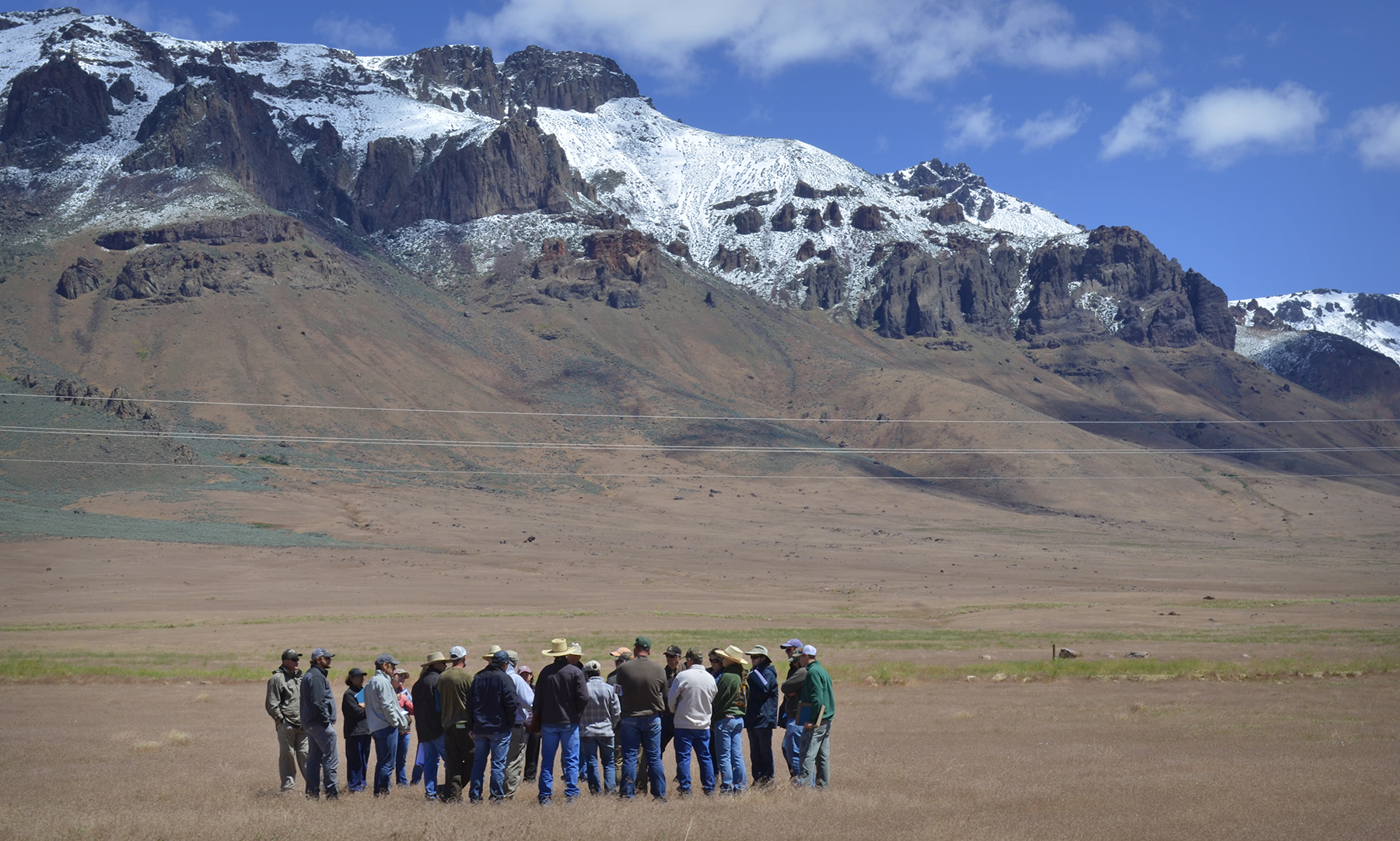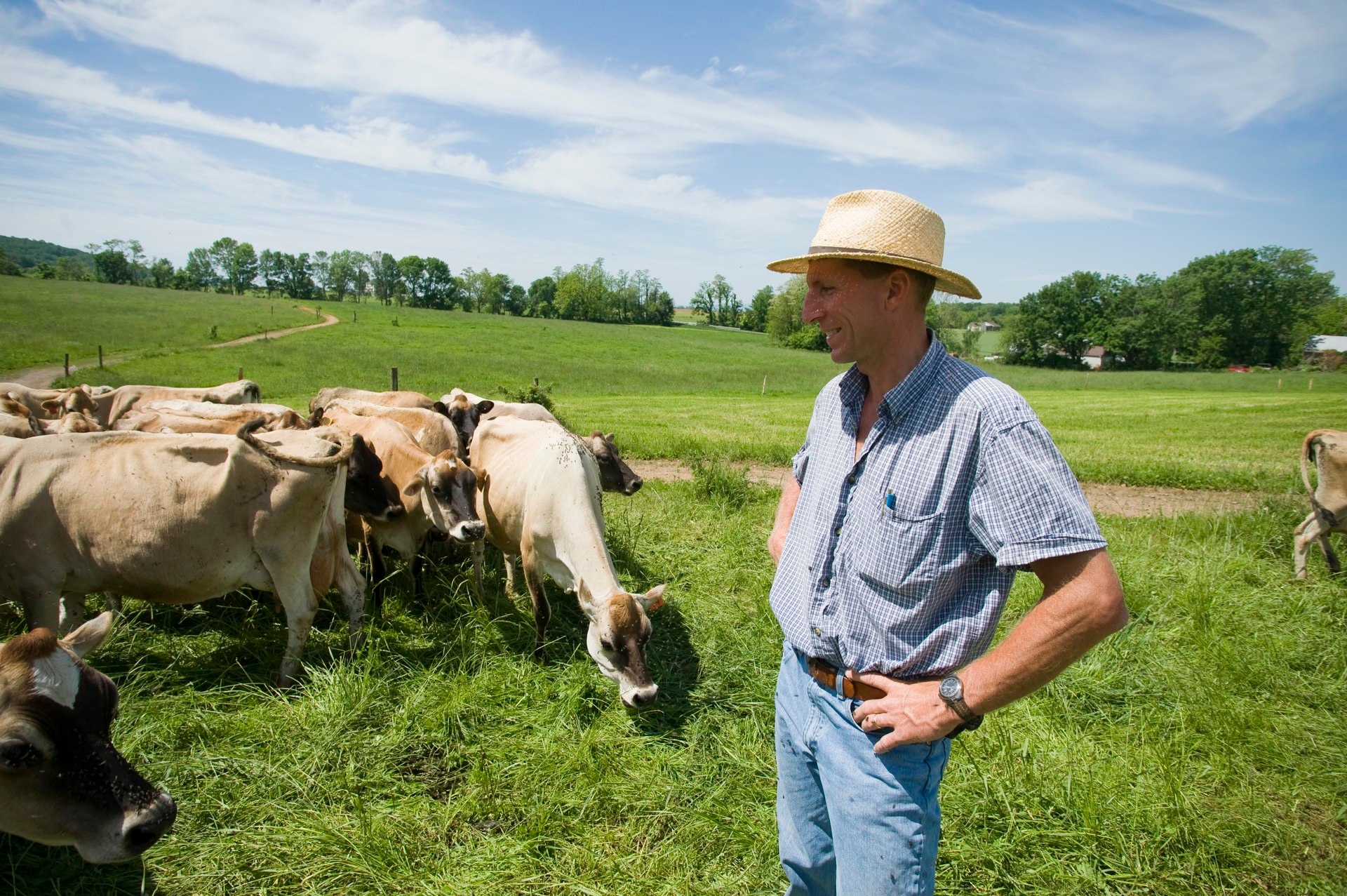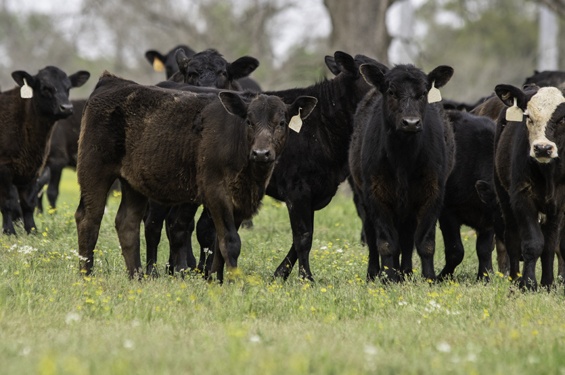
This story comes to us from Dan Hottle, a public affairs specialist with the Reno Fish and Wildlife Office, and the U.S. Fish and Wildlife Service.

Gregg Simonds of Squaw Valley Ranch is passionate about the muse that lured him out into the rugged West more than 20 years ago.
“Mother Sage,” he affectionately calls the iconic sagebrush. “She’s the keystone species out here, she’s my sense of place and why I became a member of this group.”
Two years ago Simonds helped draw together a handful of like-minded, neighboring Nevada ranchers and government agencies to find common solutions toward healthy sage lands and economically viable cattle operations. He and other ranchers, along with land managers and biologists from the U.S. Fish and Wildlife Service, Bureau of Land Management and Nevada Department of Wildlife, created a conservation think tank. The collaborative focus of the group is “results-oriented grazing for ecological resiliency,” or ROGER, for short. They meet in offices, private ranch homes and on wide-open pastures.
Sagebrush Saviors
At first glance, the odd mix of buttoned-down biologists and sun-kissed cowboys kicking dirt and sharing homemade green chili tamales and SPF-70 sunscreen on the fringes of a rugged and remote northeastern Nevada ranch hardly resembles sagebrush saviors. But if they can walk enough rangelands together to get their heads around one of the biggest land conservation challenges in the West, they might one day be.

“This group of ranchers has a history of continually seeking to improve habitat for fish and wildlife on the lands they manage,” said Carolyn Swed, Reno Fish and Wildlife Office field supervisor. “We’re reaching out to learn from each other.”
The agencies hope that ranching expertise will help guide federal management plans benefitting habitat for plants and wildlife like sage-grouse, elk, mule deer, antelope and Lahontan cutthroat trout. In turn, ranchers are seeking flexibility in their federal livestock grazing permits. That often generates healthy discussions among the group members about where, when and how to turn cattle out to pasture each season so that both cows and sage can equally thrive.

“The management of sagebrush on public lands isn’t a one-size-fits-all approach. It’s about identifying flexible solutions on both sides,” said Raul Morales, BLM’s Nevada deputy state director for Resources, Lands and Planning. “The agencies help the ranchers understand our goals for establishing and maintaining healthy public lands and the ranchers help us determine how to best get there that still keeps them operating in the black.”
“We both have strongly-held beliefs about how best to manage range lands that are oftentimes hard to negotiate, but working through the give-and-take is the only way to be able to shake hands and move forward in a positive way,” he added.
Building trust among the members has been key, often accomplished by spending time on the ground and having frank discussions.

“As with any group with this much diversity, it’s been a challenge to build trust amongst one another and expand it to new members,” said Jon Griggs, who manages nearby Maggie Creek Ranch. “It’s also been challenging dealing with some of the issues that we know we can all agree on solutions for, but we’re hindered by policy, rules and regulations that sometimes seem beyond our scope of fixing.
“But as long as we agree on desired outcomes for the health of the range — which we do — we’ll find ways of improving the land that will benefit us all.”
The group is learning that both agencies and ranchers value healthy, diverse native plant communities. They all agree that native plant cover provides food and shelter for wildlife, good forage for livestock and resiliency against wildfires and invasive weeds. What’s more difficult is reaching a mutual understanding of the term “flexibility” and how that relates to management on the ground. The expectations of agency biologists and the timing and duration of livestock grazing can seem to be in conflict. Yet, the group has agreed to a common understanding of how to balance both, and of how to experiment and learn from each other along the way.
They plan to continually monitor results on the ground to see whether or not various approaches are working. That effort will take adaptation, innovation, communication and manpower.

“We’re breaking new ground, and that takes leadership,” Simonds said. “After talking for the past two years we know what our collective emotions are about caring for the land. Now moving forward we need a better, trusted system of measuring our results on a much larger scale that allows for some risk on both sides, informs our decisions and rewards those who maintain healthy land.”
Morales said the group’s first opportunity to test out some of the more flexible grazing options discussed by the group will likely come over the next few years as BLM renews federal grazing allotment permits.
“We now know where each other is coming from,” he said. “Now it’s time to start putting our best ideas on the ground.
How Can You Use This?
No matter where you live there are conflicts about how farming and ranching interacts with the environment. Take a page from this group as an example of an alternative to fighting. See if there is a group in your area that is already working together to solve problems in a mutually beneficial way. If there isn’t, think about how you might begin to put one together. A good place to start might be your local Natural Resources Conservation Service Office.
If you’re in the West, you might check out the Western Landowners Association, a group advancing policies and practices that sustain working lands, connected landscapes, and native species. The Quivira Coalition also has a good history of helping environmentalists and ranchers work together to solve problems. Kathy and Rachel will be speaking at the Quivira Coalition’s November 2017 annual conference.

Two years ago, a handful of Nevada ranchers and government agencies got together to create a conservation think tank whose purpose was to find common solutions toward healthy sage lands and economically viable cattle operations. Credit: Dan Hottle/USFWS



